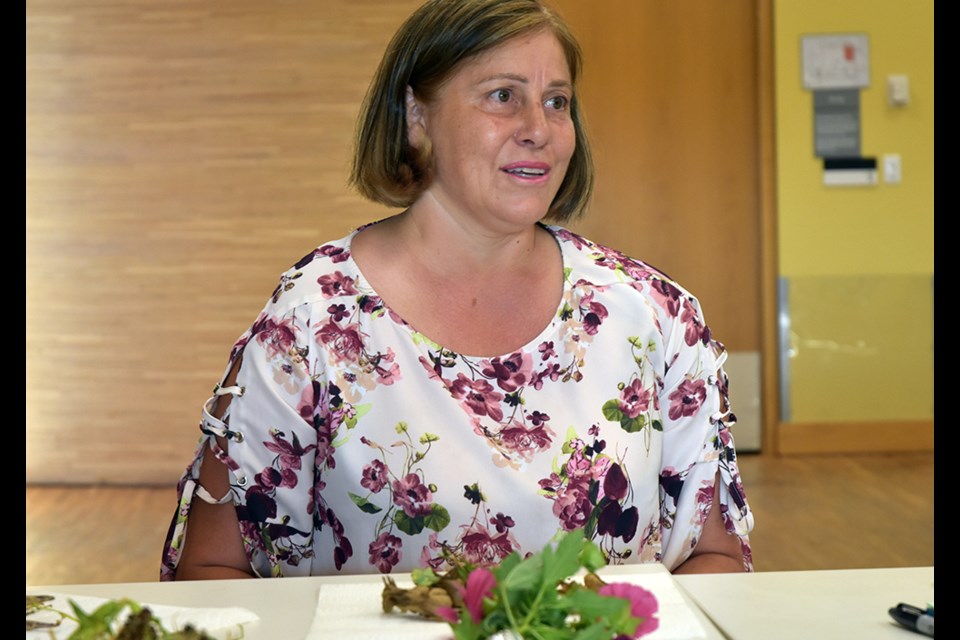Maria da Costa has been called The Butterfly Lady and The Milkweed Lady for encouraging gardeners to plant pollinator-friendly flowering plants, especially native milkweed, to support declining monarch butterfly populations.
She has organized butterfly workshops, demonstrated how to collect and protect caterpillars, and shared the joy of watching their metamorphoses into butterflies to be released back into the wild.
“It’s such a beautiful transformation, seeing them. Little miracles!” said Da Costa. “Butterflies make everyone so happy.”
Now she has earned a new name: The Seed Lady.
Da Costa led a workshop on seed saving at the Bradford Library; the focus was on teasing the seeds from dried flowering heads, culled from the garden, to save for next year’s gardening season or share with the seed library.
The library is one of many that now offer a seed library — a collection of seeds, neatly labelled by species and growth habits, that gardeners can “borrow” in the spring, to plant in their own gardens and “return” in the fall once their own blooms are done.
The Newmarket Public Library also offers a seed library.
Da Costa provided tips on the successful harvesting of seeds, to keep and to share.
The first thing is to know the names of the flowering plants in your garden that you want to harvest for their seeds.
Leave the flowers on the plants, allowing them to set seed, only picking the flowering heads once they are dry.
Not every flowering plant is a candidate for harvest. Some double blooms may be hybrids and may not produce viable seeds. But old-fashioned varieties — cosmos, sweet peas, echinacea, zinnias, even radishes and lettuce — can produce seeds for planting.
Da Costa recommended letting the harvested flower heads and seed pods sit outside in a dry, sheltered area before bringing them into the house. Why? It helps ensure that no spiders or other “little friends” make it inside.
Then it’s just a matter of sitting down and teasing the seeds from the dried flowers and pods, setting them aside and labelling.
She called the process “restful. It relaxes me just to play with seeds.”
To demonstrate, da Costa brought in fresh flowers and dried flowering heads and invited workshop participants to collect the seeds. She set some aside for the seed library, but allowed participants to take home small bags of their own dill, radish, mallow and echinacea.
Da Costa also brought in a collection of ripe heritage tomatoes from her garden and demonstrated how to save tomato seeds.
“Tomato is normally, I think, something people don’t save,” she said. Yet the seeds are viable and easy to plant.
The process begins by scooping or squeezing seeds from the ripe tomatoes into a container.
“Let them get some mould,” said da Costa, noting the mould will eat away the gelatinous goo that surrounds the seeds. Then, strain and rinse with water, and let dry on a paper towel for about two weeks.
The dried seeds can be stored in a plastic bag with a piece of paper towelling until it’s time to plant in the spring.
Her varieties were all unusual and often hard to find: Black Beauty, Brandywine, Purple Russian, Purple Bumble Bee, Barry’s Crazy Cherry Tomato. Saving the seeds ensures she’ll have them in her garden, year after year.



